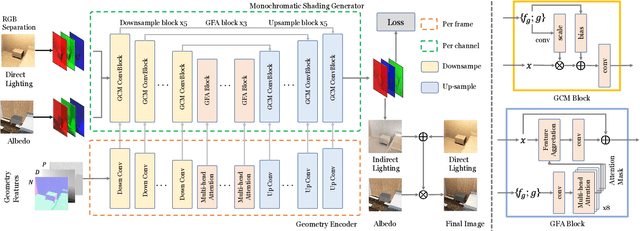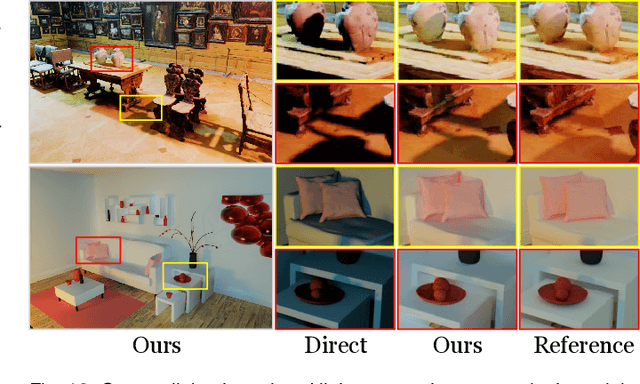Geometry-Aware Global Feature Aggregation for Real-Time Indirect Illumination
Paper and Code
Aug 12, 2025



Real-time rendering with global illumination is crucial to afford the user realistic experience in virtual environments. We present a learning-based estimator to predict diffuse indirect illumination in screen space, which then is combined with direct illumination to synthesize globally-illuminated high dynamic range (HDR) results. Our approach tackles the challenges of capturing long-range/long-distance indirect illumination when employing neural networks and is generalized to handle complex lighting and scenarios. From the neural network thinking of the solver to the rendering equation, we present a novel network architecture to predict indirect illumination. Our network is equipped with a modified attention mechanism that aggregates global information guided by spacial geometry features, as well as a monochromatic design that encodes each color channel individually. We conducted extensive evaluations, and the experimental results demonstrate our superiority over previous learning-based techniques. Our approach excels at handling complex lighting such as varying-colored lighting and environment lighting. It can successfully capture distant indirect illumination and simulates the interreflections between textured surfaces well (i.e., color bleeding effects); it can also effectively handle new scenes that are not present in the training dataset.
 Add to Chrome
Add to Chrome Add to Firefox
Add to Firefox Add to Edge
Add to Edge